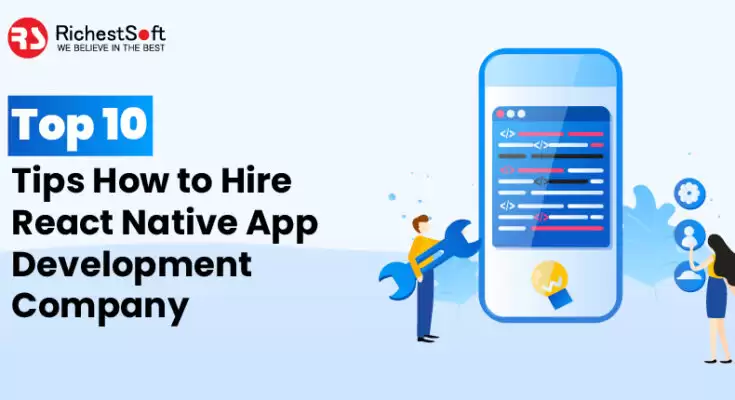There are several myths making rounds in the digital marketing community. Do you remember the initial stage when marketers were in the practice of stuffing keywords just to give a push to their blog or article?
Thankfully, search engines’ algorithms are refined over and over, promoting organic and genuine information to come up front and rank at the top on SERPs.
But still, there are a few myths that need to be debunked. So, this piece of writing is dedicated to the effort to debunk these myths.
Myth 1. It’s not possible to rank up above competitors that have bigger budgets than you.
It’s a common belief that competitors who spend more are hard to defeat in SEO services. But, this is not completely true. However, having a larger budget certainly can be an edge and leverages the company. But, it should be also remembered that it’s not the only factor that determines success. Let’s consider an example of a smaller business that can compete with larger ones in local SEO.
If you discover local SEO, smaller businesses are often seen competing with larger ones, despite having a smaller budget. The reason is simple. Actually, local search results are based on proximity to the searcher, relevance, and prominence. If a smaller business is able to improve its relevancy and prominence by focusing on optimizing its website, building local citations, and getting positive reviews from customers will be effortless. These factors can help any SEO agency that guides smaller businesses rank higher in local search results, even if they have a smaller budget.
The second significant thing is the quality of the content together with relevancy. In the world of search engine optimization, content rules. So, it is vital to attend the quality and relevancy of your content seriously. Remember, Google’s algorithms prioritize content that is useful, informative, and relevant to the searcher’s query. This is leveraging to those who focus on creating high-quality content and providing responses to the target audience that seeks it. So, you can still compete with larger companies that have bigger budgets if you provide quality responses in your content.
The third significant point is link building, which can help you to come above those who spend big budgets.
Being an important part of SEO, but it doesn’t need to be expensive. What matters is the relevancy of the link, DA and PR. So, select such sites that match your niche and have these link score metrics better. There are many ways to build links on a budget, such as guest posting on other websites, participating in online communities, and creating shareable content that people will want to link to. By focusing on building high-quality, relevant links, you can improve your website’s authority and rankings, even if you don’t have a large budget.
In a nutshell, while having a larger budget can certainly give a company an advantage in SEO, it’s not the only factor that determines success. Smaller businesses have a big chance to compete with larger ones and win, especially in local SEO through enhanced content quality, relevancy in content, and link building. Achieving this goal will be like a walkover if your focus is on the aforesaid factors and optimizing your website for search engines, you can still achieve success in SEO, even if you don’t have a large budget.
Myth 2. If you have more backlinks, you would have higher Google ranking.
The idea that more backlinks automatically lead to higher Google rankings is a common misconception in SEO. However, it’s not entirely true. Here, we cannot deny that backlinks are an important factor in Google’s ranking algorithm. But, if the quality and relevancy of those links are not up-to-mark, the quantity won’t do any good.
This happens because of Google’s algorithms. They take into account the quality, relevancy, and authority of the websites linking to yours. A few high-quality and relevant backlinks from authoritative sources can be more valuable than many low-quality links from irrelevant sources.
Let’s consider another case, which is associated with links from spammy or low-quality sources. They can actually harm your rankings
Having too many low-quality or spammy backlinks can never help you achieve top rankings. In addition, they lead to penalties from Google. Therefore, it’s important to focus on building high-quality, relevant links from authoritative sources.
In essence, it’s true that backlinks are an important factor in Google’s ranking algorithm. But, the quality and relevancy of those links also matter the most, but not the quantity. Focusing on building high-quality, relevant links from authoritative sources can help improve your rankings, while too many low-quality or spammy backlinks are good for nothing.
Myth 3. Introducing a new website will negatively impact your SEO campaign.
This idea is a common myth in the industry. However, it’s not entirely true. In fact, a new website can often come up with a scope of more opportunities, which is to improve your SEO efforts. This is simply because a new website can be optimized for SEO from scratch.
When designing a new website, a digital marketing company or SEO expert can help you to define SEO integrity from the beginning. It ensures that the design has a clean and logical structure, uses relevant keywords, and has high-quality content. This can help improve your rankings from the beginning.
A website redesign can improve user experience and increase engagement, which are important factors that Google takes into account when ranking websites. By making your website more user-friendly and engaging, you can improve your rankings over time.
Overall, getting a new website does not necessarily hurt your SEO campaign. In fact, a new website can provide an opportunity to optimize your website for SEO from the start and improve user experience, which can help improve your rankings over time.
Myth 4. A website design has nothing to do with SEO.
Website structure and design affect user experience, which is a significant factor in SEO ranking. Search engines like Google prioritize websites that provide a good user experience, and a well-designed website can help achieve this.
Website speed is a crucial SEO factor. Good design practices, such as optimizing images and code, can improve a website’s speed, leading to better rankings because the search engine optimization experts are there to guide developers about on-page SEO difficulties. In addition to it, mobile responsiveness is also essential for SEO. A website that is not mobile-friendly can negatively impact rankings, and good web design can ensure a website is optimized for mobile devices.
Myth 5. A high bounce rate is actually bad for your visibility & ranking.
The myth that a high bounce rate is bad for search rankings is not entirely accurate. Bounce rate refers to the percentage of users who leave a website after visiting only one page. It can be an indication that the user didn’t find what they were looking for or that the website design or user experience needs improvement. However, a high bounce rate alone doesn’t necessarily mean that the website will have poor search rankings.
Google has stated that bounce rate is not a direct ranking factor. Instead, search engines consider other metrics, such as time spent on a website, pages per session, and click-through rates. A high bounce rate may indicate a problem, but it doesn’t necessarily mean a website’s search rankings will be negatively impacted.
Myth 6. Cold outreach (via email marketing) with “quick question” subject lines can be good for link building.
The myth that cold outreach with “quick question” subject lines can still power your link building is not only ineffective, but can also harm your website’s reputation.
Firstly, bulk cold outreach emails are often viewed as spam by recipients, which can lead to a high rate of ignored or deleted emails.
Secondly, “quick question” subject lines are commonly used in spam emails, and many spam filters will flag emails with this subject line as suspicious.
Thirdly, building links through unsolicited emails is against Google’s Webmaster Guidelines and can result in penalties, which can negatively impact your search engine rankings.
Therefore, it is essential to adopt ethical and effective link-building strategies to build high-quality backlinks and avoid being penalized by search engines.
Myth 7. Not passing Core Web Vitals (CWV) will never let your website rank.
The myth that not passing Core Web Vitals (CWV) will end up in no visibility on SERPs. CWV defines how webpages perform. Precisely, it states that the better core web vitals improve web engagement and business metrics. In short, it is an essential ranking factor, but not the only factor that determines a website’s search ranking.
Google has stated that “page experience” is a ranking factor, of which CWV is a part. However, other factors, such as content relevancy, authority, and backlinks, still play a significant role in search rankings.
Additionally, Google has stated that content with the best information will still rank highly, even if it doesn’t pass the CWV assessment. While passing CWV is crucial for a good user experience, it does not guarantee a higher search ranking on its own.
Myth 8. Passage Indexing Is Nothing
In 2023, Google has come up with the goodness of regenerative AI. Fortunately, it has announced a game-changing algorithm that is Passage Indexing. The essence of this update is to turn search results better, which is possible if you understand the meaning of individual passages (content body) within web pages.
Let’s simplify this. If a specific section (which answers the pressing or burning question of users) is buried within a long piece of content (like a blog or an article), it can still be a part of search results for a relevant question. Passage Indexing impacted nearly 7% of all search queries in 2020.
The aforementioned algorithm emphasizes internal ranking, which influences the results popped in the search engine results page (SERP). This is where the need for a well-defined structure of the content appears. That’s why Google expects to have it for benefiting the most from this algorithm update. Now in 2023, it’s focusing more on bringing the most comprehensive and useful content to the spotlight. This content is like addressing the pressing queries of the target users.
Passage Indexing has certainly proved incredible for searches that consist of long-tailed and question-based queries. The leading search engine works to provide the best and relevant answers from various trustworthy sources. For this purpose, its bots have started focusing on getting deep into the content on each page. This engine is showing answers through specific passages on forum pages rather than directing users to broader pages.
To get into individual passages and understanding, Google bots crawl and index pages. Its Advanced Natural Language Processing Algorithm plays a key role in it. It reads and filters the result on the basis of drawn understanding.
However, many content developers and marketers may be aware of this update. But, their inattentiveness to it prevent them from yielding its benefits.
Here is a catch that can help you to capitalize on it.
Structure your content into multiple sections. Simply put, segment the entire blog or article into sections. Each section should have a sub-topic or title to summarize the trailing body. This is how the website owner can add a depth to his/ her content. This practice also helps you to discover the intent of the search. Once determined, the relevant information can be served via the content later on, which increases customer satisfaction. Don’t forget to wisely use heading tags for the business or organization. It indeed helps bots to comprehend the content.
In essence, it is recommended that Passage Indexing is going to help you to rank up on SERPs, given that you have valuable information within web pages. Though, they may be deeper inside. This update is specifically helpful for those who share long articles. These long-form content most exceed 2000 words. Unfortunately, short articles carrying websites may not leverage this algorithm.
Additionally, to enhance user experience, having a table of contents at the beginning or as a sticky element is advisable, as it helps users navigate the content efficiently.
Summary
Search engine optimization (SEO) is a critical part of any online marketing strategy, but there are many myths surrounding it. They are mainly associated with CWV, web design, bounce rate, backlinks and new website, and competitors’ budget. These all myths are already debunked in this post.








